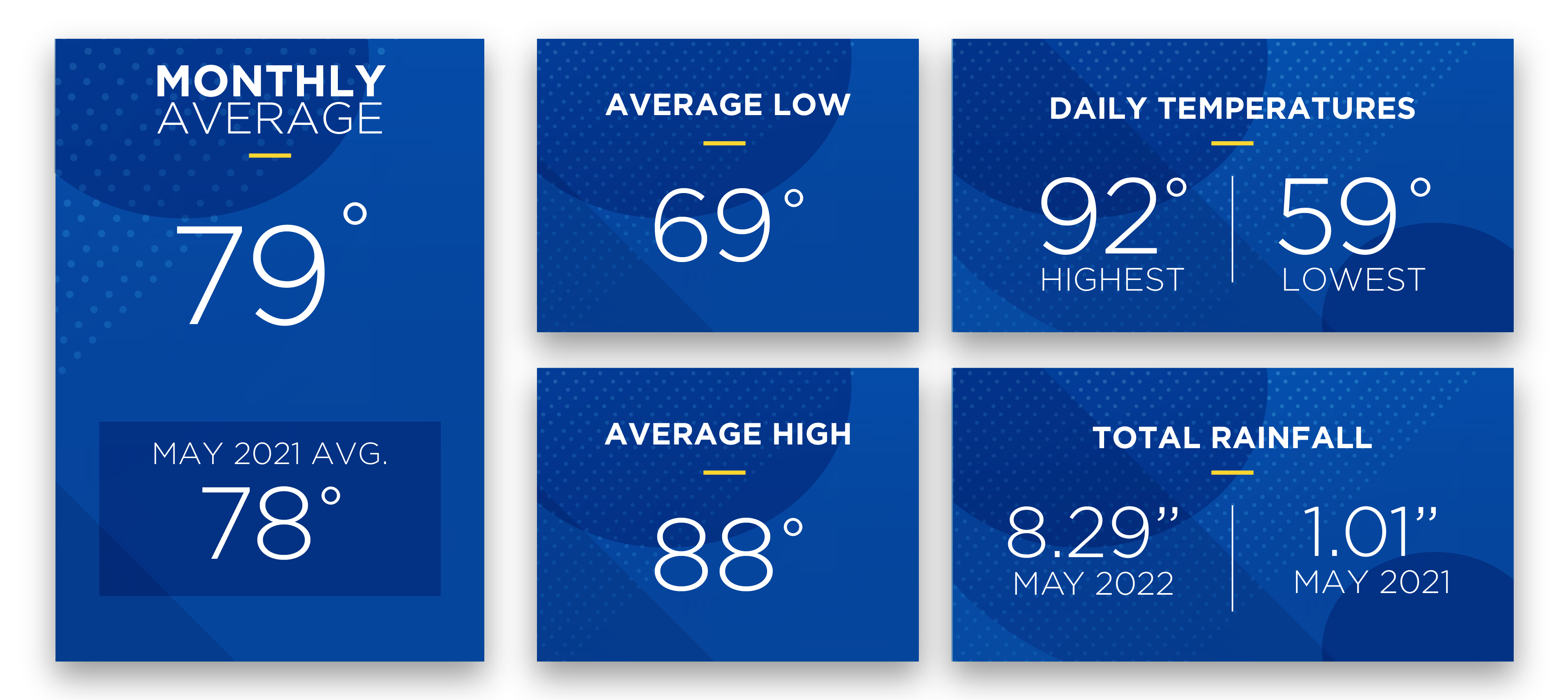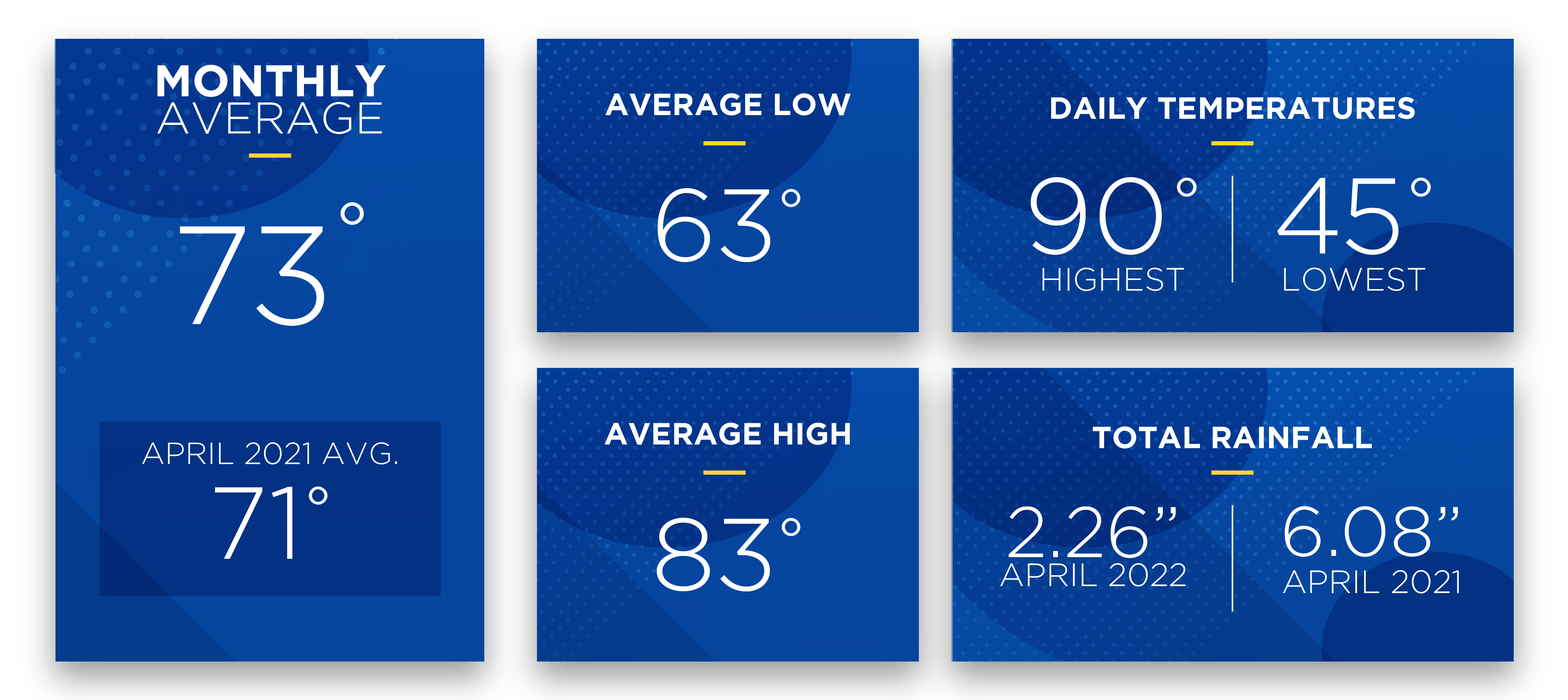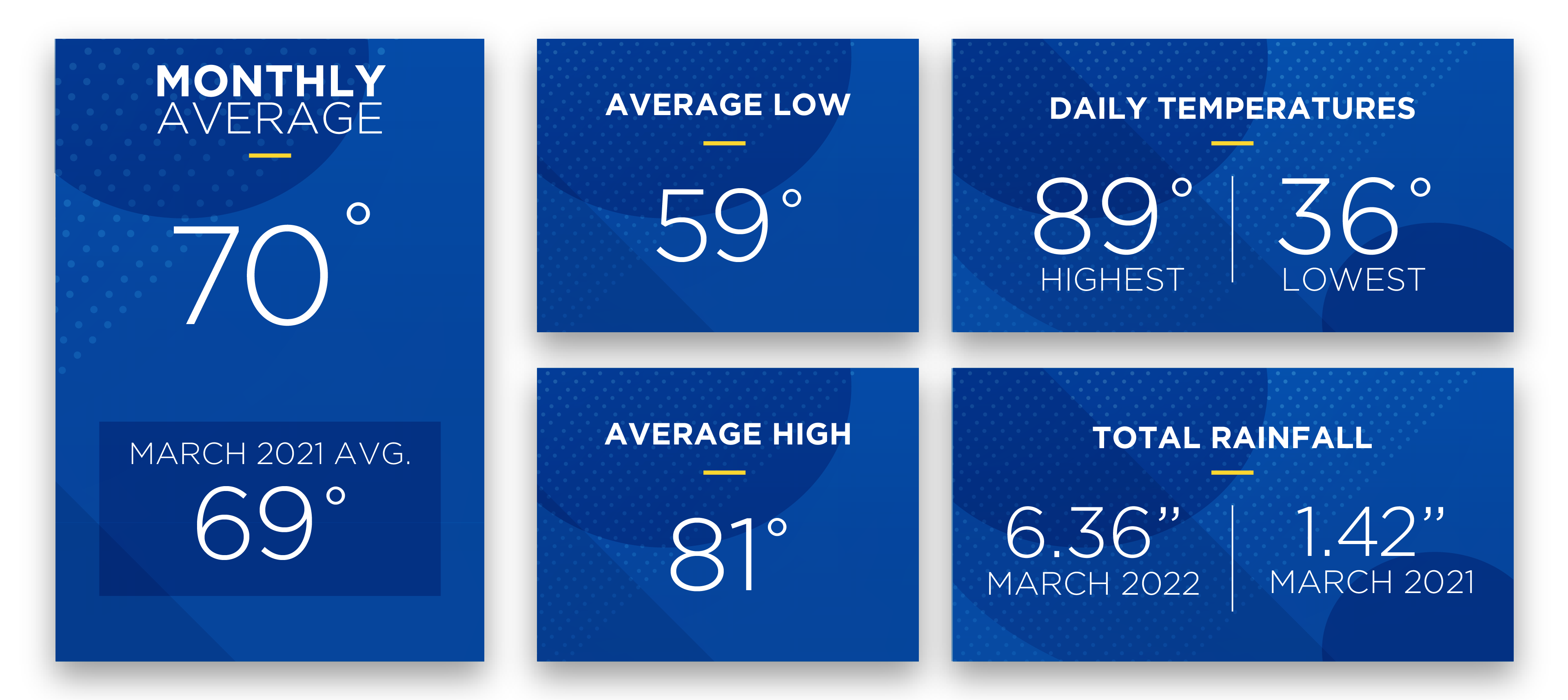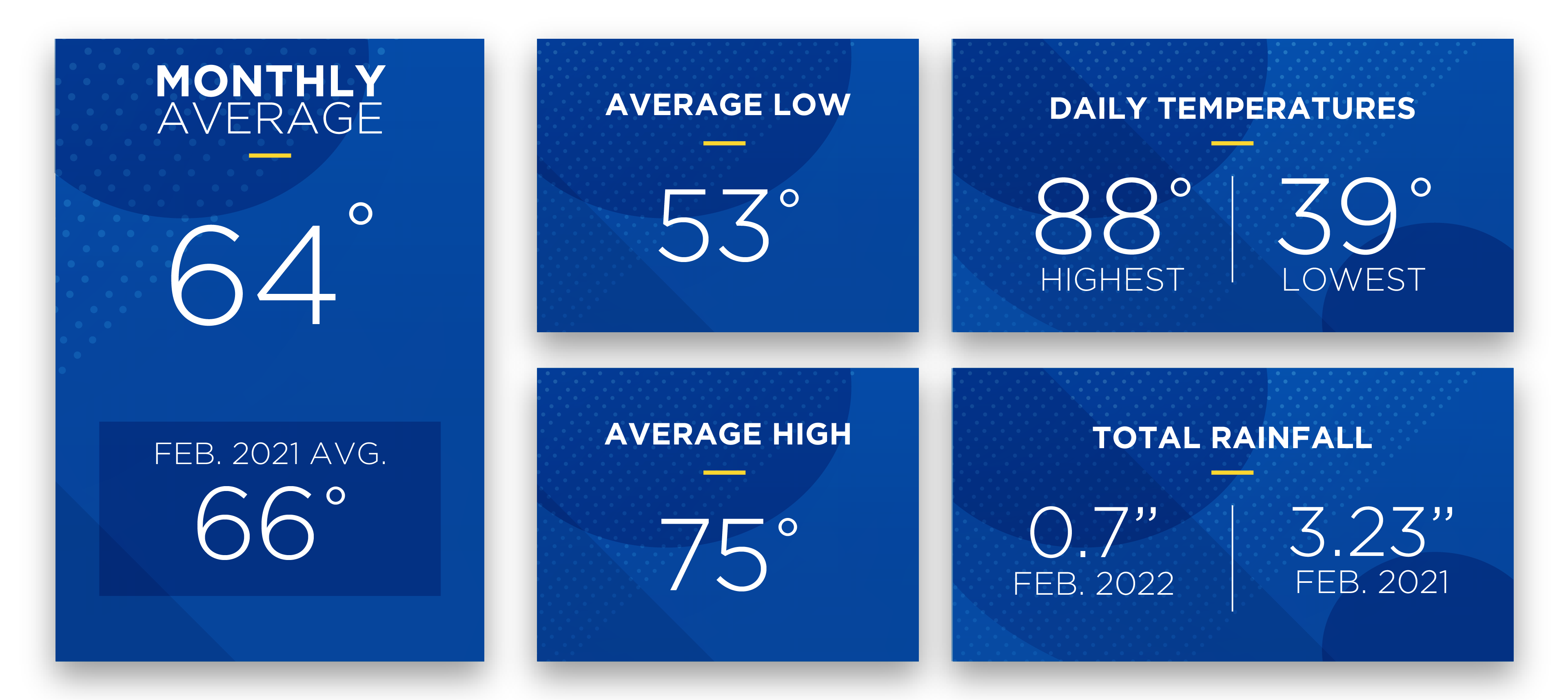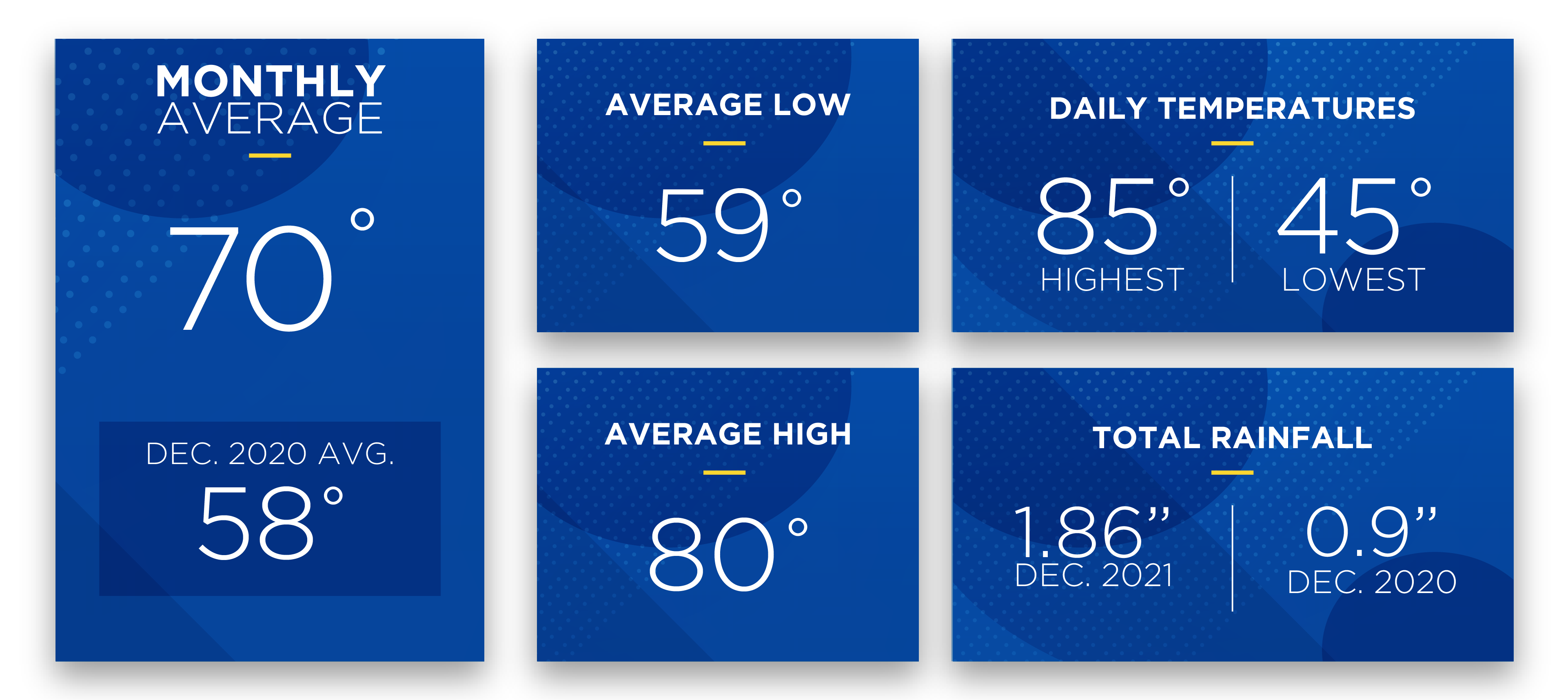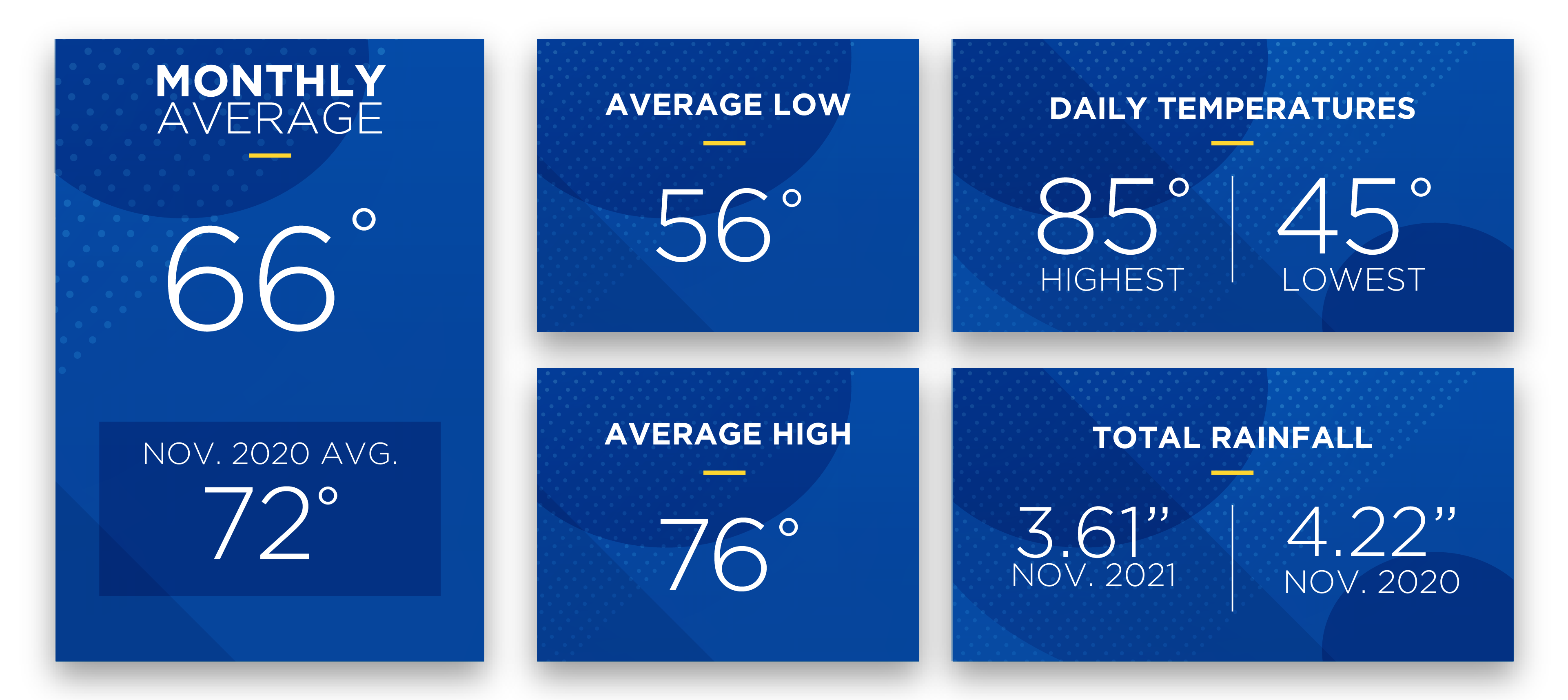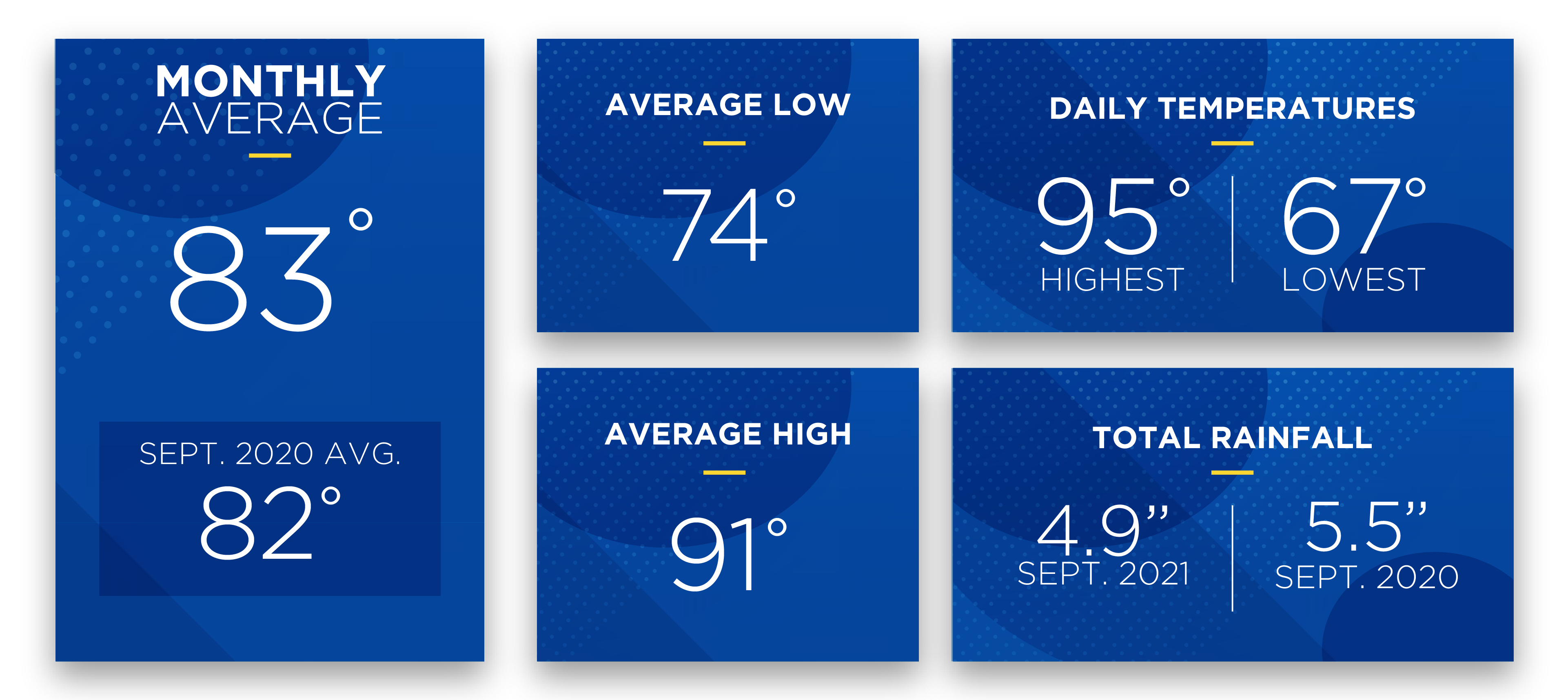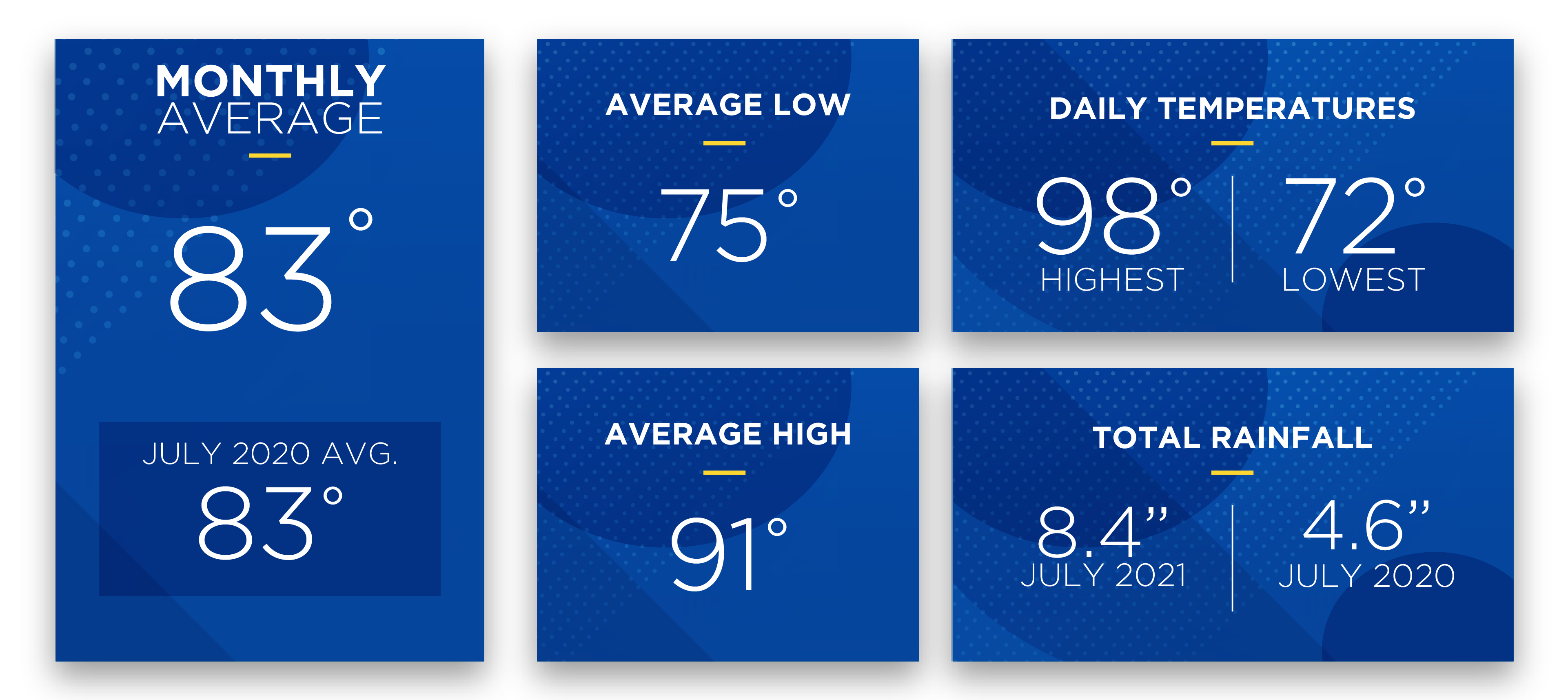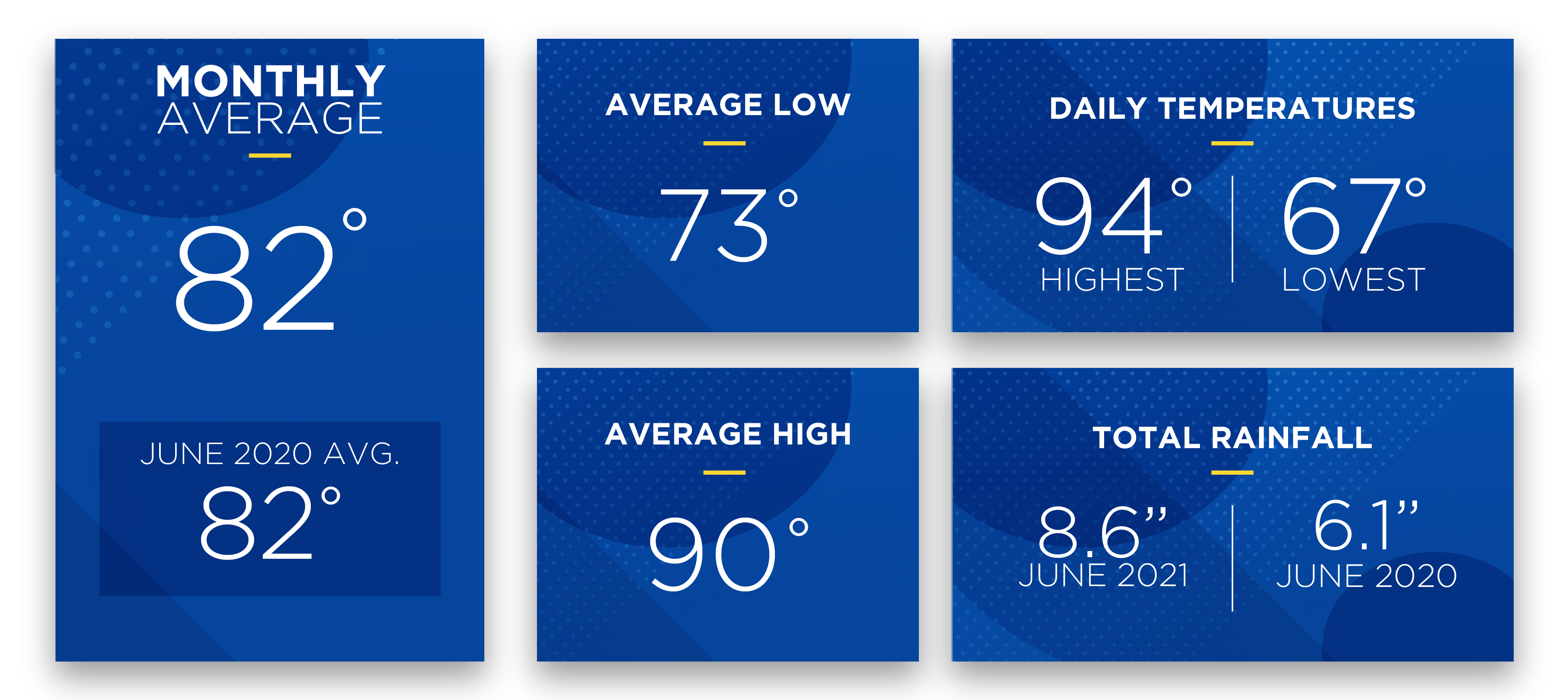May 2022 Sunshine State Stats
Summer-like heat and heavy rainfall arrived in Central Florida in May 2022. The average temperature for the month was 79 degrees, which was 6 degrees warmer than last month’s average. The average high was 88 degrees while the average low was 69 degrees.
The highest daily recorded temperature in May was 92 degrees and the lowest was 59 – the highest recorded daily temperature in April 2022 was 90 degrees and the lowest recorded daily temperature was 45. May was soggy with higher-than-average rainfall that totaled 8.29 inches, which was over 4 inches above average.
High daily temperatures remained near 90 degrees for most of the month. Every day this month reached over 80 degrees – with 11 days over 90 degrees. Summer temperatures are starting to be in full swing, expect daily highs in the 80s, 90s and above. Temperatures at night and early morning are warming up, too. Thirty days in the month the low temperature reached into the 60s and 70s.
Atlantic hurricane season began June 1 with potential tropical storm activity In the Gulf of Mexico. Now is the time to have a plan in place for hurricane season. Don’t wait until a storm is approaching our shores to prepare. Read our Hurricane Handbook to learn more about what to do before, during and after a tropical storm or hurricane.
June forecast:
Daily high temperatures will soar over 80 degrees and into the 90s for June 2022. The best chance for rain is early to mid-month. Members may notice an increase in their monthly energy usage during the summer months. HVAC use is the highest percentage of energy use in Central Florida homes. Set your thermostat at 78 degrees or higher in the summer – every degree lower than 78 will increase your monthly bill by 6 to 8%.
The Old Farmer’s Almanac predicts a hot and dry June with an average temperature of 82 degrees, which is above average. Rainfall is predicted to be below average.
To check historical usage, log into SmartHub to view past bills and consumption charts. If your usage is high, SECO offers several energy-efficiency tools to help you identify energy wasters. Take the Home Energy Assessment to receive a detailed email tailored to your home’s features and lifestyle. The energy-saving advice will provide low-cost ways to decrease your usage – and your electric bill.
To easily calculate how much energy your appliances, lighting, electronic devices, and other energy-using items in your home consume, use the Energy Estimator.




